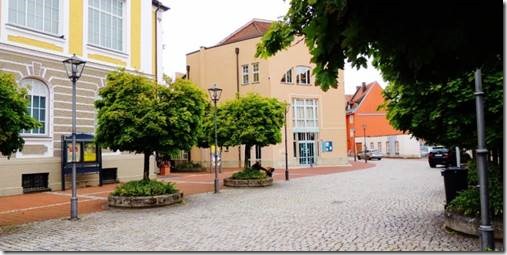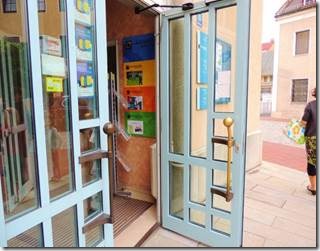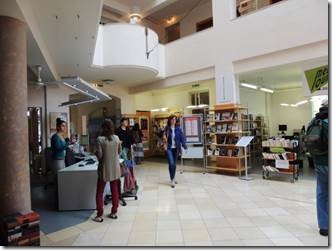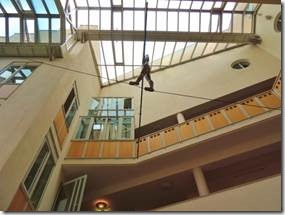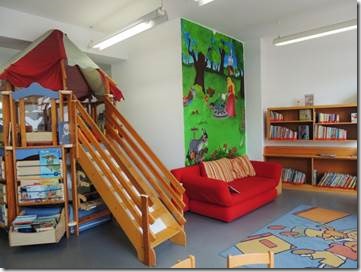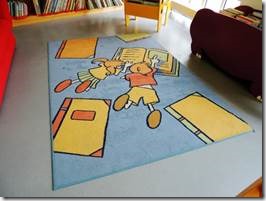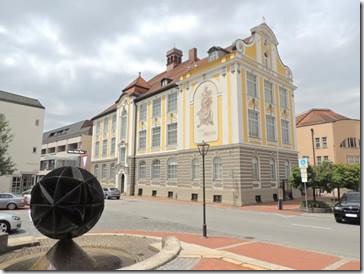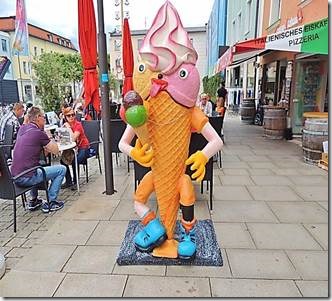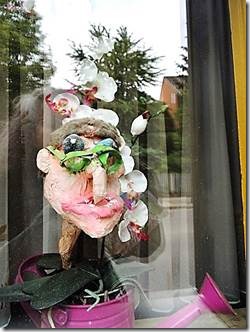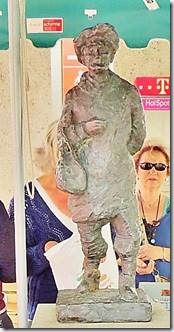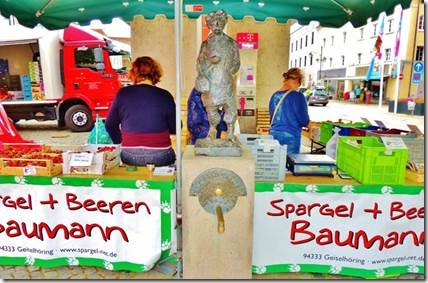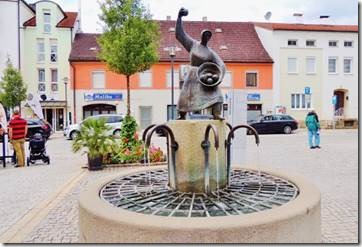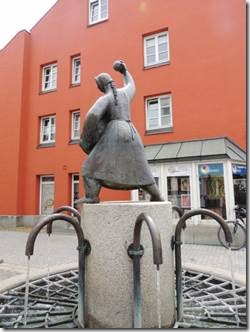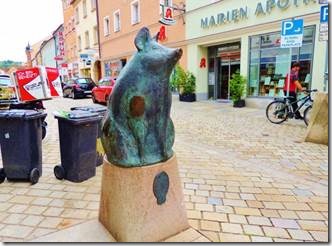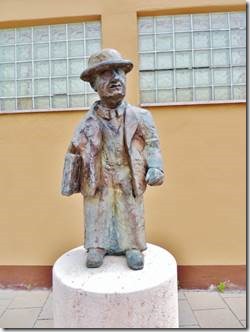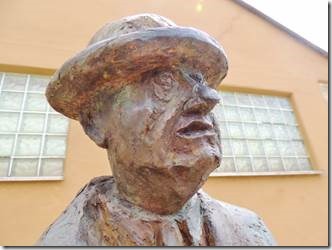Another horribly bright and sunny day in Deggendorf
Guten Morgen,
So here we still are. Some rain in the forecast for this week. Certainly hope so. This email is about the Deggendorf Public Library and some public art. Next email more photos of the town center.
Ru
|
Deggendorf Library “The town library is one of Bavaria’s most architecturally beautiful libraries. Around 70,000 items and a variety of events invite one to linger.” M-F 10 to 6; Saturday 10 to 12 noon. Deggendorf Tourist Map The library seemed pretty busy which was nice to see. Wonder if the evening and Saturday hours change during the school year? No hands needed door! It senses that you’re there and opens. |
|
The main desk over which is a sky light and the sculpture of a tight rope walker. Not sure what’s upstairs but I’ll look next visit. |
|
A wonderfully decorated kids room. |
|
Next door is the Town Museum. Across the road is The Museum of Crafts and Trade is just near the round fountain but nothing is available in English so we didn’t buy the ticket needed for entry. |
|
Funny art : ice cream advert and someone’s “treasure” in a window. |
|
Around town are different sculptures so Randal and I set off to find them. Sculpture of Sammer Xidi who is described as a “mushroom expert and colorful Deggendorf character.” You can drink the water from the fountain at his feet. During the week there are food stalls set up in the town square. On Sunday it’s just Sammer Xidi. |
|
Dumpling Fountain She saved the town but is still only referred to as “the Mayor’s wife” rather than by her name. A fountain in the old town centre commemorates the legend of the “dumpling hurler“. In 1266 Deggendorf was saved from being overrun by Ottokar of Bohemia after the mayor‘s wife drove off an enemy spy by throwing a dumpling at him. After hearing that the inhabitants were using food to bombard their attackers, the enemy troops concluded a siege would be useless and withdrew.” http://www.deggendorf.de/ official town brochure. Reading about the dumplings made me think of a similar latke story. I thought I remembered something about throwing latkes at the enemy but this more interesting legend of Judith and the Assyrians is what I found. The Latke Tale Did you know that latkes were originally made with cheese? Legend has it that in the 16th century, a young widow, Judith, fed the Assyrian general Holofernes salty cheese latkes so he would thirst for more wine and become intoxicated. It worked and she beheaded him in his stupor, which allowed the Jews to defeat the leaderless Assyrians. It wasn’t until the mid-19th century when potatoes began to be farmed that latkes were made from potatoes. However, the most important element is the oil that is used to fry the latkes, which symbolizes the holiday miracle in which one day’s worth of oil illuminated the Holy Temple for eight days when the Jews recaptured it in Jerusalem in 165 B.C. |
|
“Rosa” the Sow with the shiny spots where she has been rubbed. Her shoulder and nose. “Called “Rosa” by the citizens of Deggendorf. This location in the Pfleggasse is a reminder of the piglet market once regularly held here.” Deggendorf Tourist Map |
|
Schorsch Karmann Glassmeisier 1884-1959 http://axinte.de/persona_eng.htm website of the artist of the glass maker; the sculpture was sponsored by the town of Deggendorf Savings Bank. This was added in 2012 and wasn’t on the map or mentioned in the tourist booklet. We found it looking for the Post Office. “The first glassmakers in Germany were brought here by the Romans, but after they left, it wasn’t until the Middle Ages that Germans rediscovered the art of making glass. By the end of the 17th century, there were about 60 glass factories and the area in the eastern part of Bavaria gradually developed into an important center for glassmaking. http://discoveringbavaria.com/The-Glass-Road.html |

